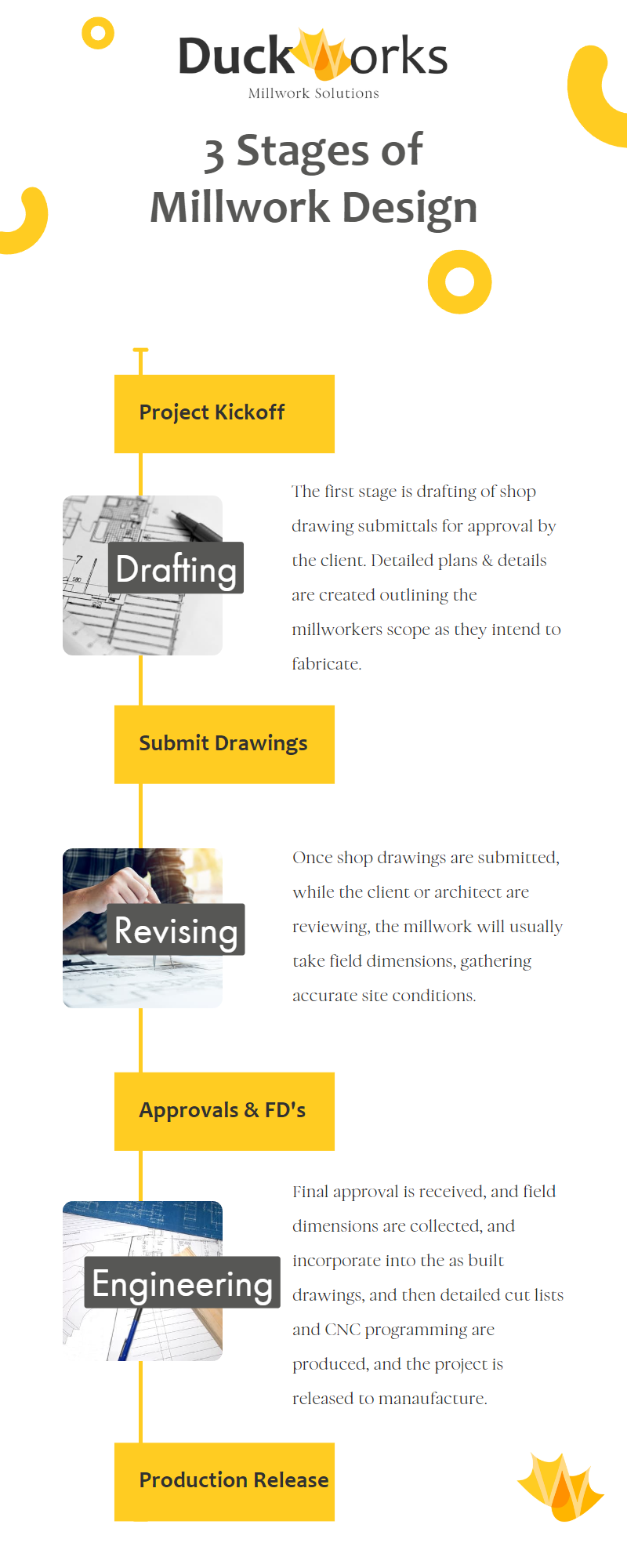Welcome to Part 2 of our six-part series on managing a millwork design team. In the previous post, we discussed Step 1 – defining your inputs. Now, in Step 2, we’ll delve into the importance of documenting your team’s process.
Step 2: Document the Process
You might wonder why documenting the process comes after defining the inputs, but in reality, it all starts with the inputs. Without clear inputs, there is no process. Once you’ve defined your inputs, you’ve likely gathered the necessary information for drafting, engineering, and guiding your team through the process. That’s why Step 2 focuses on documenting the process.
If you’re reading this, chances are you already have a process that works but isn’t standardized or documented. Maybe your team operates on tribal knowledge or institutional experience. The goal of this step is to refine and improve that process.
To get started, create an outline of the process you currently use as a baseline for building a framework for the process you want to document. Most design departments’ lifecycles begin with a project handoff, followed by estimating or sales requesting shop drawings.
The milestones that bookend the design process are project kickoff and submitting shop drawings to the client. Another milestone opens the next stage – returning the drawings from the client. If the client requests revisions or has comments, a new set of tasks occur within design, and the process starts again. This continues until the client approves the drawings.
Once approved, someone incorporates redlines, revisions, and field dimensions, and creates a for-record or as-built set that includes all comments, revisions, field dimensions, and all the necessary information for cut-listing, engineering, production drawings, reports, and output to your machines.

3 Stages of Millwork Design
If we break it down, the design lifecycle consists of three stages bookended by milestones. The first stage is submittals, starting with handoff and ending with submitting to the client. The second stage includes redline incorporation, and incorporation of field dimensions. The third stage is engineering and production release.
The documentation should focus on the work between those milestones. If we break it into those three stages, then there are three sets of documentation that we need to focus on. Don’t let the granularity of the documentation process intimidate you from getting started. The important thing is to be consistent and accessible for everyone on your team.
The format for the documentation can be a Word document, wiki, SharePoint site, or OneNote. What matters is that the documentation is consistent and easy to access by everyone on your team.
To sum up, Step 2 is all about documenting the process and focusing on the work between the milestones. The design lifecycle consists of three stages bookended by milestones, and the documentation should focus on the work between those bookends. Regardless of the format, it’s essential to prioritize consistency and accessibility for your team.
Feeling lost in the world of millwork drafting and Microvellum shop drawings?
Don’t worry, we’ve got your back!
Our services don’t just stop at drafting and drawings, we also offer guidance and process improvement to help you streamline your workflow like a pro.
Let’s turn your confusion into clarity and your chaos into beautiful custom designs!